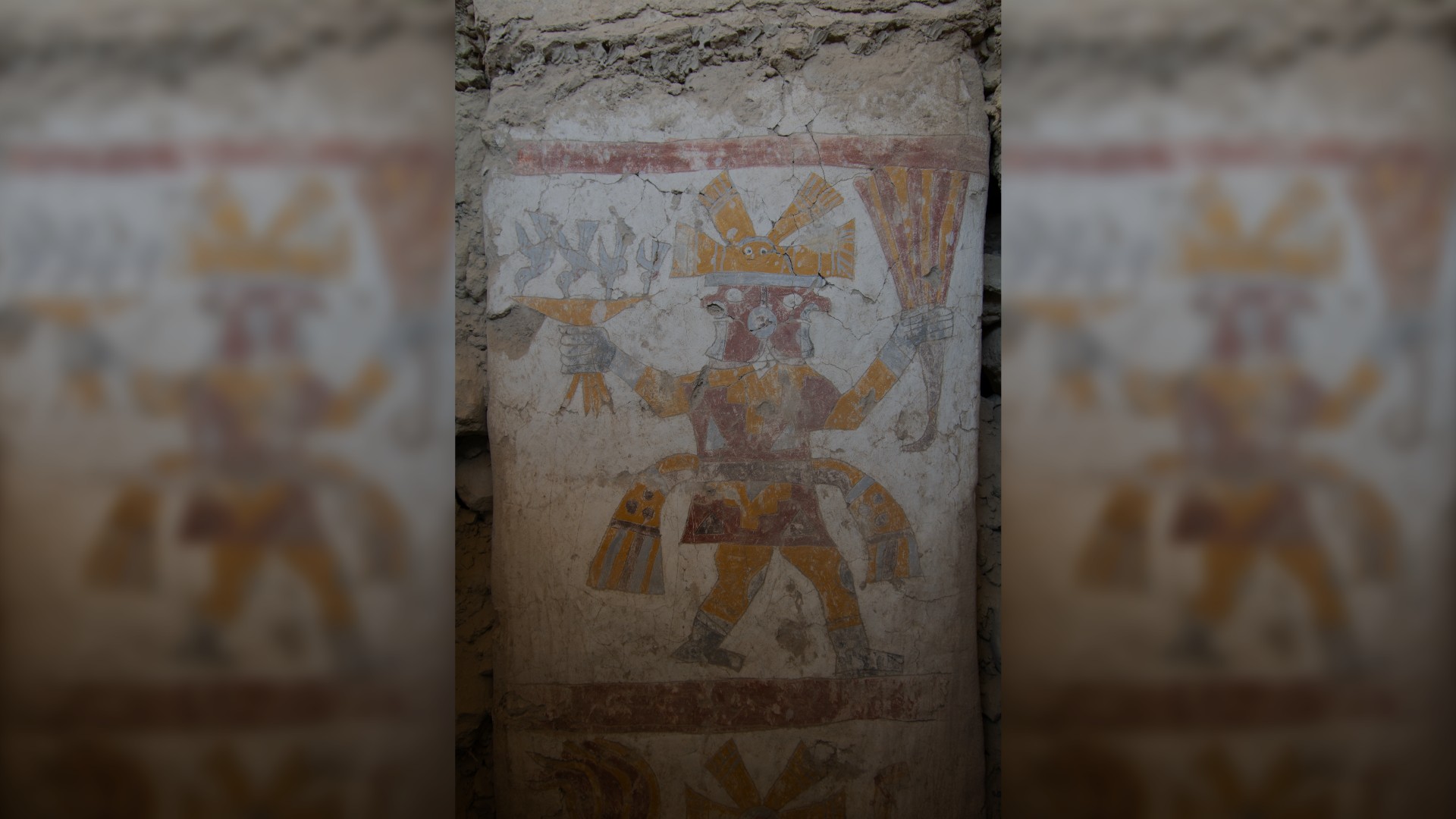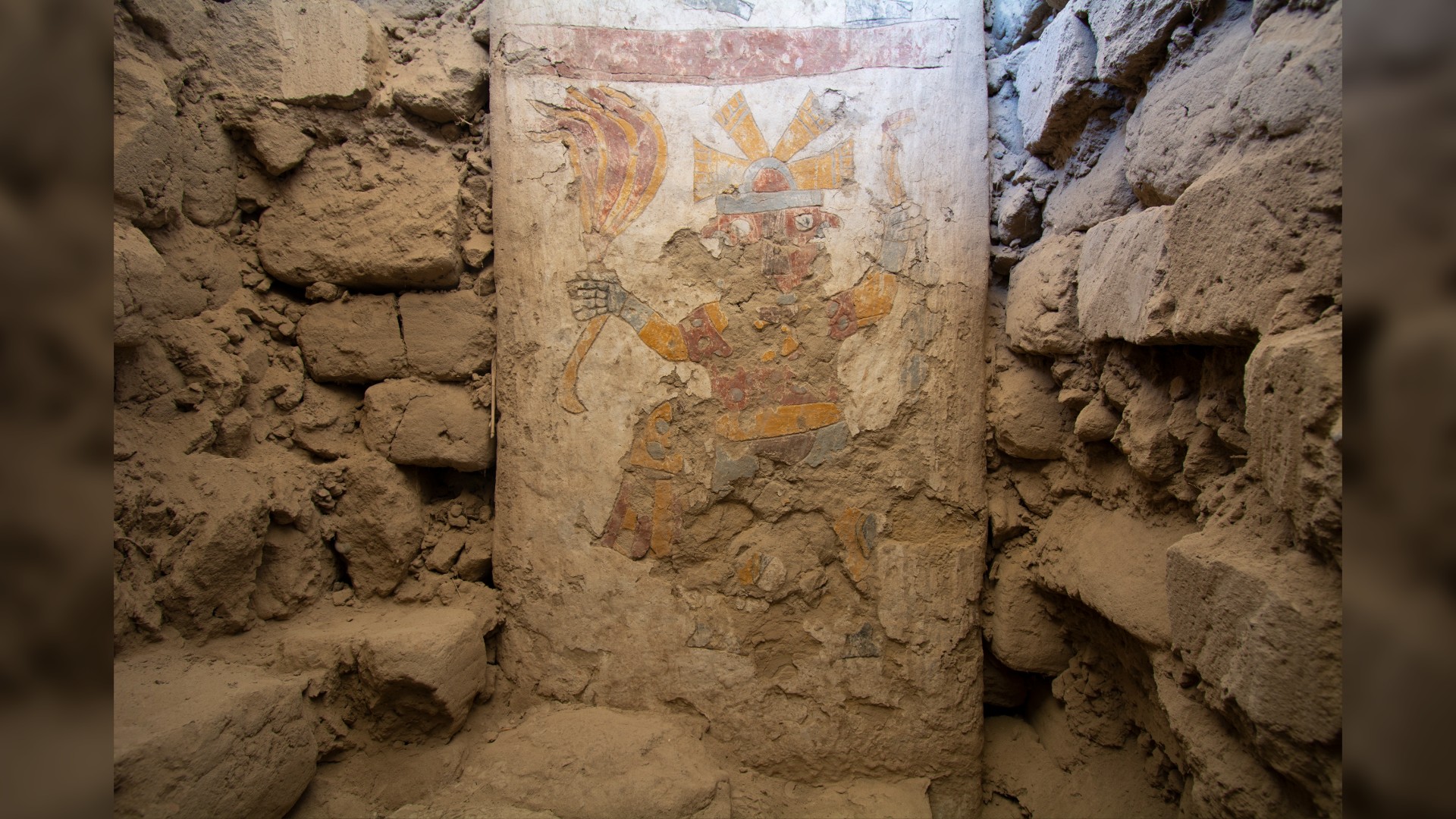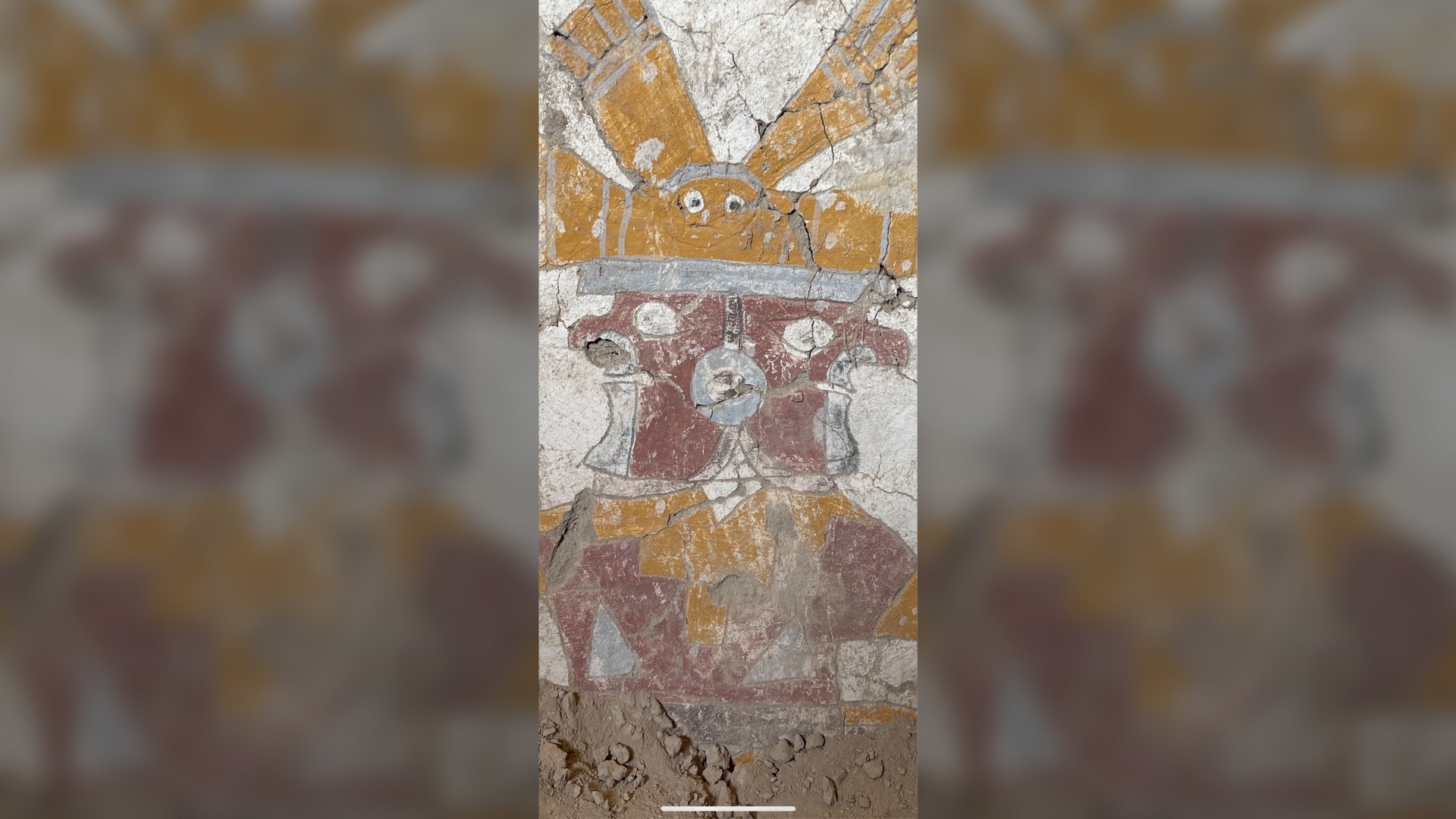1,400-year-old mural of 2-faced men unearthed in Peru may allude to 'cosmic realms'
Archaeologists have discovered two 1,400-year-old murals of two-faced men within a ceremonial hall that belonged to the Moche culture of Peru.

Two murals of two-faced men holding unusual treasures — including a goblet that hummingbirds are drinking from, a detail that may allude to sacrifice and "cosmic realms" — were recently discovered at the 1,400-year-old archaeological site of Pañamarca in coastal Peru.
Both murals, which adorn the same pillar within a ceremonial hall, are rich in detail. In one mural, which sits near the top of the pillar, a man with two faces — one looking left and one looking right — holds a feather fan in one hand and a goblet with four hummingbirds drinking from it in the other. The second two-faced man, painted lower on the pillar, has a moving feather fan in one hand and a stick-like object that is only partly preserved in the other. Researchers say the artists may have been experimenting with how to depict movement.
Both men are wearing what looks like a headdress or crown on their heads and colorful clothing that has elaborate patterns and what appear to be sizable belts. The murals were unearthed by archaeologists in August 2022.

Why the Moche depicted these two men like this is a mystery. "There is nothing quite like this in South American archaeology," Lisa Trever, an associate professor of pre-Columbian art history and archaeology at Columbia University who is one of the leaders of the team, told Live Science in an email. "The artists may have been experimenting with how to show movement, and two narrative moments at once."
The murals were drawn between A.D. 550 and 800, at a time when a civilization known as the Moche flourished in coastal areas of Peru. The Moche built sizable temples, engaged in human sacrifice and created fine works of art, such as ceramic goblets that are sculpted in the shapes of human heads. They lived before a writing system was used in Peru.
Related: 15th-century Chan Chan mass grave discovered in Peru
The two men may be deities, but this is uncertain. "Typically, deity images in Moche art have non-human aspects like fangs, or the faces or tails or wings of various creatures. This one, with the exception of the two faces, seems entirely human," Trever noted.
Sign up for the Live Science daily newsletter now
Get the world’s most fascinating discoveries delivered straight to your inbox.

Mysterious hall
Pañamarca is an architectural complex located in Peru's lower Nepeña Valley. The hall with the two-faced men contains numerous other murals, including examples depicting a priestess, a serpent and a bat. Archaeologists have been studying it for over 60 years, after uncovering the first mural in 1958. Despite the decades of study, much of the hall is still unexcavated, and more murals are likely waiting to be found, the team said in a statement.
It's still unknown how the Moche used this hall. "One of the things that is so interesting, and challenging, about this building is that the unusual density of paintings within it means that we can only excavate and conserve a modest part of the building each field season," Trever said. "That means that we still have a lot of questions about the architecture and its functions."
It's unlikely that many people had access to this hall. "Certainly this was a space that was not for public access, given how narrow the passages and interior space are," Trever said. "It must have been a very special place to enter, maybe only open to the leaders or elders of the community at Pañamarca."

Important finds
The recent discoveries are important, said Edward Swenson, director of the Archaeology Centre at the University of Toronto, who is not involved with the research project. "The Pañamarca murals are truly spectacular, and the 2022 discoveries will no doubt significantly aid archaeological and art historical efforts to reconstruct the cosmological meanings and religious narratives of Moche iconography," Swenson, who has studied the Moche extensively, told Live Science in an email.
One possible explanation for why the men have two faces is that it may "signify a mortal wearing a mask and thus impersonating or becoming one with [the] supernatural," Swenson said.
The detail of the hummingbirds drinking from the goblet is also important, as it may symbolize a connection between mortals and gods. "I interpret the [hummingbirds] drinking from the cup as a powerful invocation of the centrality of sacrifice in Moche worldview," Swenson said. "Sacrifice served as a critical mechanism to ensure the circulation of life-giving fluids between beings and cosmic realms."
The team will continue fieldwork at the site this year.

Owen Jarus is a regular contributor to Live Science who writes about archaeology and humans' past. He has also written for The Independent (UK), The Canadian Press (CP) and The Associated Press (AP), among others. Owen has a bachelor of arts degree from the University of Toronto and a journalism degree from Ryerson University.









